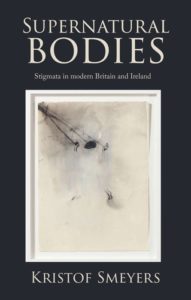Monthly Updates on Recent Books in the History of Christianity
To raise awareness of recent books in the history of Christianity, the editorial staff of Church History: Studies in Christianity and Culture highlights each month a list of 10-15 books in diverse periods and geographical regions that we hope will be of interest to our members. We include here below the 48th monthly list, chosen by our staff, with excerpts from the publishers’ blurbs.
Paul Emory Putz. The Spirit of the Game: American Christianity and Big-Time Sports. 2024
The Spirit of the Game offers a cultural and intellectual history of the Christian athlete movement in the United States, an effort led by American Protestants over the course of the twentieth century to carve out a home within big-time sports. Bridging scholarship on sport history and religious history, it uses sports as a lens for understanding transformations and overlapping communities in American Protestantism, including mainline, evangelical, Southern Baptist, and Black Protestant institutions and leaders. The book begins in the 1920s and traces the story until the twenty-first century. It focuses especially on the formation and development of three major sports ministries—the Fellowship of Christian Athletes, Athletes in Action, and Pro Athletes Outreach—showing how those organizations established a lasting religious subculture within the sports industry. It also highlights the ways that conflict over issues like race, pluralism, gender, sexuality, theology, and politics honed the identity of the movement. Ultimately, the book argues that the leaders of the Christian athlete movement came to see sports as a form a middlebrow culture, a place for shaping future generations in a way that protected “traditional” American values while also allowing room for gradual change. In so doing, they turned commercialized athletics from what seemed in the 1920s like a potential rival for cultural authority into a means through which Protestants could maintain influence in a supposedly more secular American society.
Simon Burke, ed. The Principles of Religion by Rabban Daniel Ibn al-Ḥaṭṭāb: A 13th-Century Synopsis of Syriac Orthodox Belief. Critical Edition, Translation, and Commentary. 2024
“The most important of all things sought.” Thus the Syriac Orthodox monk Rabban Daniel Ibn al-Ḥaṭṭāb describes the subject of The Principles of Religion, written in the 13th century, probably in South-East Anatolia. In this treatise, Rabban Daniel Ibn al-Ḥaṭṭāb systematically explained and defended fundamental commitments of Syriac Orthodox theology.
This volume provides an introduction, a critical edition of the Arabic text, an English translation, and extensive commentary on the influences on The Principles of Religion, particularly from Syriac sources. This editio princeps offers the reader a new window into the literary culture of the Syriac Orthodox Church during the years of the Syriac Renaissance.

Andrew Kloes and Laura M. Mair, eds. Social Christianity in Scotland and Beyond, 1800-2000: Essays in Honour of Stewart J. Brown. 2024
Social Christianity in Scotland and Beyond explores the multifarious initiatives known variously as ‘social Christianity’, ‘Christian socialism’, or the ‘social gospel’, that spanned countries, continents, decades, and denominations. Building on the scholarship of Stewart J. Brown, to whom this volume is dedicated, fourteen leading and emerging scholars of the history of Christianity consider the varying social policies and initiatives that Christians have pursued in response to industrialisation, urbanisation, expanding global trade networks, and nascent democratic politics. With a particular focus on religious communities in Scotland, the essays provide comparative lenses with which to view sociological and theological developments through examinations of similar phenomena in England, Germany, the Netherlands, and the United States. In adopting an international perspective that extends beyond Britain and the US, this volume encourages a more holistic understanding of social Christianity as part of a multifaceted and fluid belief system that evolved and shifted according to context.
Davide Scotto. Juan de Segovia and the Qur’an: Converting the Muslims in Fifteenth-Century Europe. 2024
In spring 1456, with the help of the faqīh Yça Gidelli, Juan de Segovia accomplished a trilingual Qur’an (Castilian, Arabic and Latin) he regarded as fundamental to the conversion of the Muslims after the Ottoman conquest of Byzantium. This book delves into Segovia’s program, from his university lectures at Salamanca to the disputes held with Muslims in Castile, from the doctrinal debates at the Council of Basel to his exile in the Duchy of Savoy and the destiny of his books. Segovia deemed the await of miracles, preaching in Islamic lands, and the Crusade promoted by the papacy, to be useless. On the contrary, he considered knowledge of the Qur'an as unavoidable for Christian scholars engaged in the study of Islam, but also for Muslims, who were supposed to understand Christian doctrine through their own "law". It will be shown how Segovia's proposal is far from echoing modern concerns for religious tolerance, pacifism, and Arabic studies, let alone twentieth-century interreligious dialogue. Drawing on Biblical exegesis, Segovia called his program via pacis et doctrine and discussed it with influential churchmen such as Nicholas of Cusa and Enea Silvio Piccolomini. He believed mutual exchange of doctrinal ideas to be the only solution to stem wars and persuade Muslims to convert voluntarily to the Christian faith.

Kenneth Stow. Feeding the Eternal City: Jewish and Christian Butchers in the Roman Ghetto. 2024
For Rome’s Jewish population, confined to a ghetto between 1555 and 1870, efforts to secure kosher meat were fraught with challenges. The city’s papal authorities viewed kashrut—the Jewish dietary laws—with suspicion, and it was widely believed that kosher meat would contaminate any Christian who consumed it. Supplying kosher provisions entailed circumventing canon law and the institutions that regulated the butchering and sale of meat throughout the city.
Kenneth Stow finds that Jewish butchers collaborated extensively with their Christian counterparts to ensure a supply of kosher meat, regardless of the laws that prohibited such interactions. Jewish butchers sold nonkosher portions of slaughtered animals daily to Christians outside the ghetto, which in turn ensured the affordability of kosher meat. At the same time, Christian butchers also found it profitable to work with Jews, as this enabled them to sell good meat otherwise unavailable at attractive prices. These relationships could be warm and almost intimate, but they could also be rife with anger, deception, and even litigation. Nonetheless, without this close cooperation—and the willingness of authorities to turn a blind eye to it—meat-eating in the ghetto would have been nearly impossible. Only the rise of the secular state in the late nineteenth century brought fundamental change, putting an end to canon law and allowing the kosher meat market to flourish.
A rich social history of food in early modern Rome, Feeding the Eternal City is also a compelling narrative of Jewish life and religious acculturation in the capital of Catholicism.
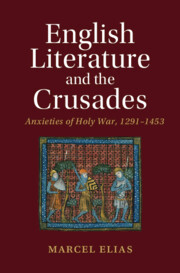
Marcel Elias. English Literature and the Crusades: Anxieties of Holy War, 1291–1453. 2024
The period from the Mamlūk reconquest of Acre (1291) to the Ottoman siege of Constantinople (1453) witnessed the production of a substantial corpus of Middle English crusade romances. Marcel Elias places these romances in dialogue with multifarious European writings to offer a novel account of late medieval crusade culture: as ambivalent and self-critical, animated by tensions and debates, and fraught with anxiety. These romances uphold ideals of holy war while expressing anxieties about issues as diverse as God’s endorsement of the crusading enterprise, the conversion of Christians to Islam, the sinfulness of crusaders, and the morality of violence. Reinvigorating debates in medieval postcolonialism, drawing on emotion studies, and excavating a rich multilingual archive, this book is a major contribution to the cultural history of the crusades.
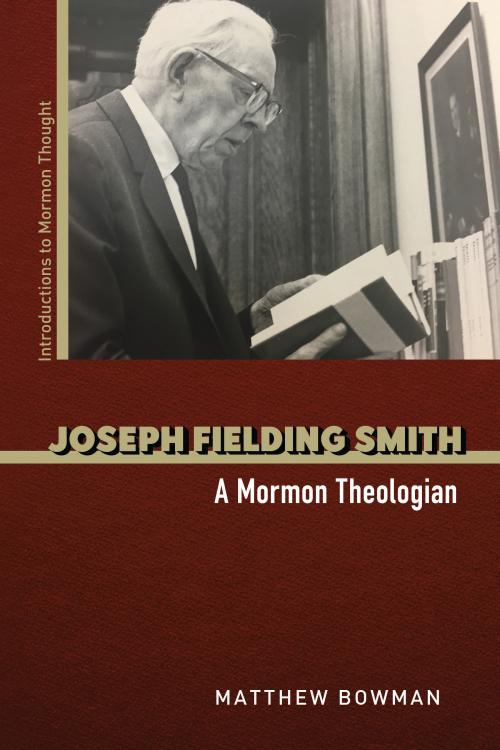
Matthew Bowman. Joseph Fielding Smith: A Mormon Theologian. 2024
In the early and mid-twentieth century, Joseph Fielding Smith’s (1876–1972) life as a public historian and theologian shaped the religious worldview of generations of Latter-day Saints. Matthew Bowman examines Smith’s ideas and his place in American religious history. Smith achieved position and influence at a young age, while his theories about the age of the earth and the falseness of evolutionary theory brought fame and controversy. As Bowman shows, Smith’s strong identity as a Saint influenced how he blended Protestant fundamentalist thought into his distinctly LDS theological views. Bowman also goes beyond Smith’s well-known conservatism to reveal him as an important thinker engaged with the major religious questions of his time.
Incisive and illuminating, Joseph Fielding Smith examines the worldview and development of an influential theologian and his place in American religious and intellectual history.
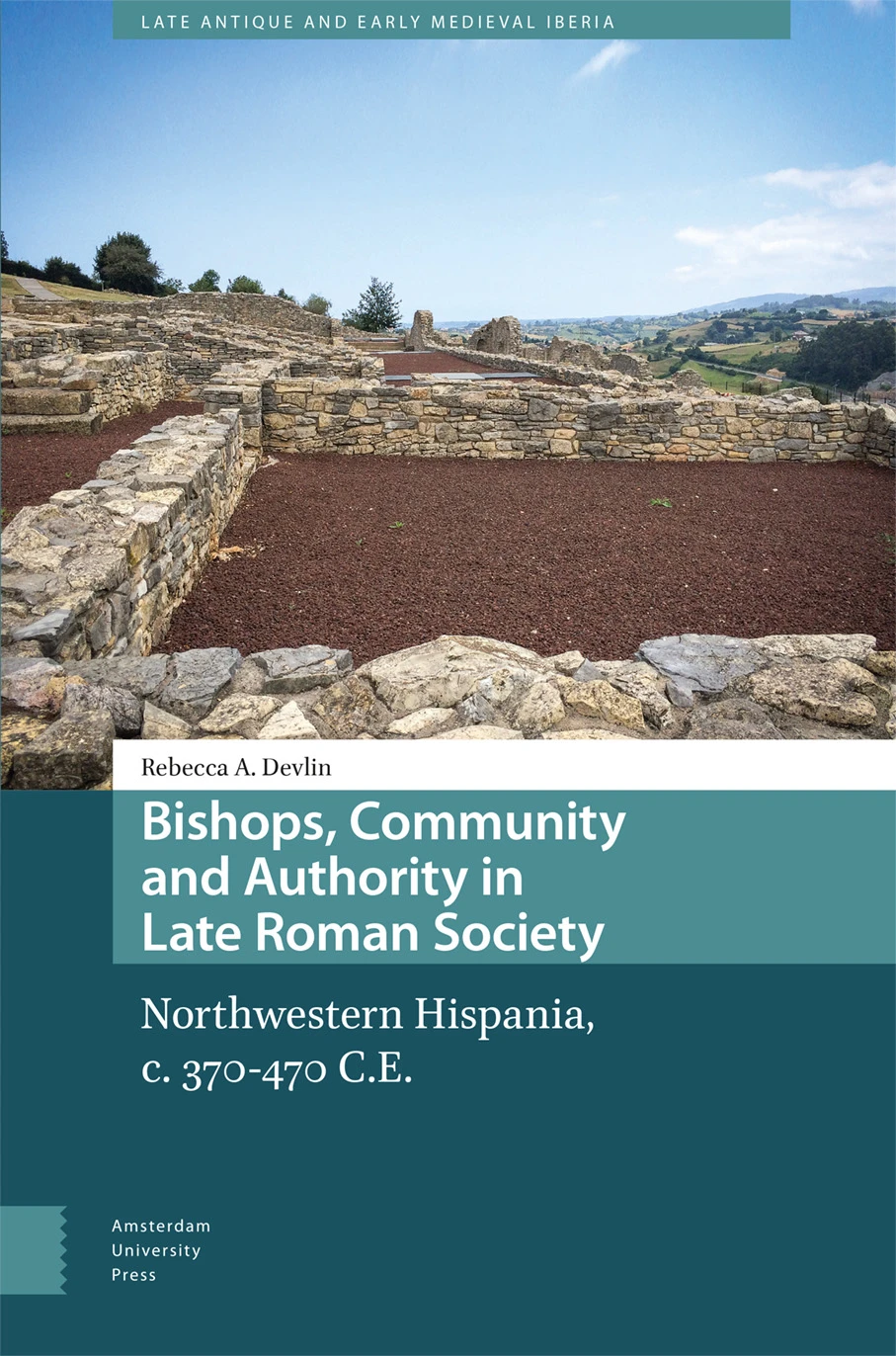
Rebecca Devlin. Bishops, Community and Authority in Late Roman Society: Northwestern Hispania, c. 370-470 C.E. 2024
When the bishop Hydatius found himself held hostage in Gallaecia, a Roman province in the northwestern Iberian Peninsula, by a band of Sueves in the year 460, he deployed his experience as an ambassador for his congregation and used his captivity as a tool for negotiating peace. As this example shows, bishops held considerable economic, political, and social power in the early Middle Ages. The expansion of ecclesiastical influence was not, however, a simple consequence of the legalization of Christianity or a power vacuum that followed the withdrawal of imperial authority. The transformation of the episcopate resulted instead from dynamic processes to which all status groups contributed and that are best understood through contextual and diachronic analysis. This monograph focuses on the clerical community in Gallaecia and employs a case study and interdisciplinary approach, incorporating written and material evidence, to put bishops like Hydatius in their larger social and economic contexts to elucidate why the people living and working in their sees would imbue them with increasing authority and explain how their roles within their local communities expanded.

Paula Fredriksen. Ancient Christianities: The First Five Hundred Years. 2024
The ancient Mediterranean teemed with gods. For centuries, a practical religious pluralism prevailed. How, then, did one particular god come to dominate the politics and piety of the late Roman Empire? In Ancient Christianities, Paula Fredriksen traces the evolution of early Christianity—or rather, of early Christianities—through five centuries of Empire, mapping its pathways from the hills of Judea to the halls of Rome and Constantinople. It is a story with a sprawling cast of characters: not only theologians, bishops, and emperors, but also gods and demons, angels and magicians, astrologers and ascetics, saints and heretics, aristocratic patrons and millenarian enthusiasts. All played their part in the development of what became and remains an energetically diverse biblical religion.
The New Testament, as we know it, represents only a small selection of the many gospels, letters, acts of apostles, and revelations that circulated before the establishment of the imperial church. It tells how the gospel passed from Jesus, to the apostles, thence to Paul. But by using our peripheral vision, by looking to noncanonical and paracanonical texts, by availing ourselves of information derived from papyri, inscriptions, and archaeology, we can see a different, richer, much less linear story emerging. Fredriksen brings together these many sources to reconstruct the lively interactions of pagans, Jews, and Christians, tracing the conversions of Christianity from an energetic form of Jewish messianism to an arm of the late Roman state.
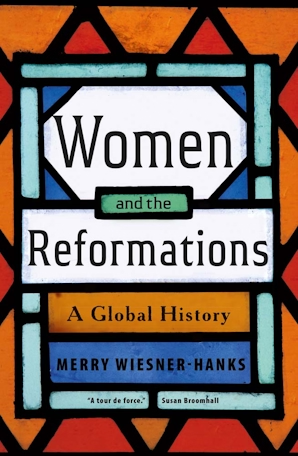
Merry Wiesner-Hanks. Women and the Reformations: A Global History. 2024
The Reformations, both Protestant and Catholic, have long been told as stories of men. But women were central to the transformations that took place in Europe and beyond. What was life like for them in this turbulent period? How did their actions and ideas shape Christianity and influence societies around the world?
In this rich and definitive study, renowned scholar Merry E. Wiesner-Hanks explores the history of women and the Reformations in full for the first time. Wiesner-Hanks travels the globe, examining well-known figures like Teresa of Avila, Elizabeth I, and Anne Hutchinson, as well as women whose stories are only now emerging. Along the way, we meet converts in Japan, Spanish nuns in the Philippines, and saints in Ethiopia and America. Wiesner-Hanks explores women’s experiences as monarchs, mothers, migrants, martyrs, mystics, and missionaries, revealing that the story of the Reformations is no longer simply European—and that women played a vital role.
Kristof Smeyers. Supernatural Bodies: Stigmata in Modern Britain and Ireland. 2024
This book is the first in-depth study of the changing perceptions and receptions of supernatural bodies in modern Britain and Ireland. It focuses on one phenomenon that became hotly contested and discussed in the public sphere between 1840 and 1940: the stigmata. In 1874, an Irish reporter asked why the wounds of the crucified Christ on mortal bodies could 'not be discussed with calmness, without indulging in angry rhetoric'. Supernatural bodies takes that question seriously. It draws on previously unexamined archival materials to place supernatural bodies at the heart of long-lasting discussions about the position of Roman Catholicism in society; the supernatural in modern Christianity and society; the authority of sciences; the relationship between Britain and Ireland, and between Britain and the Continent. Through the lens of stigmata controversies, this book shows how these discussions could converge around supernatural bodies.
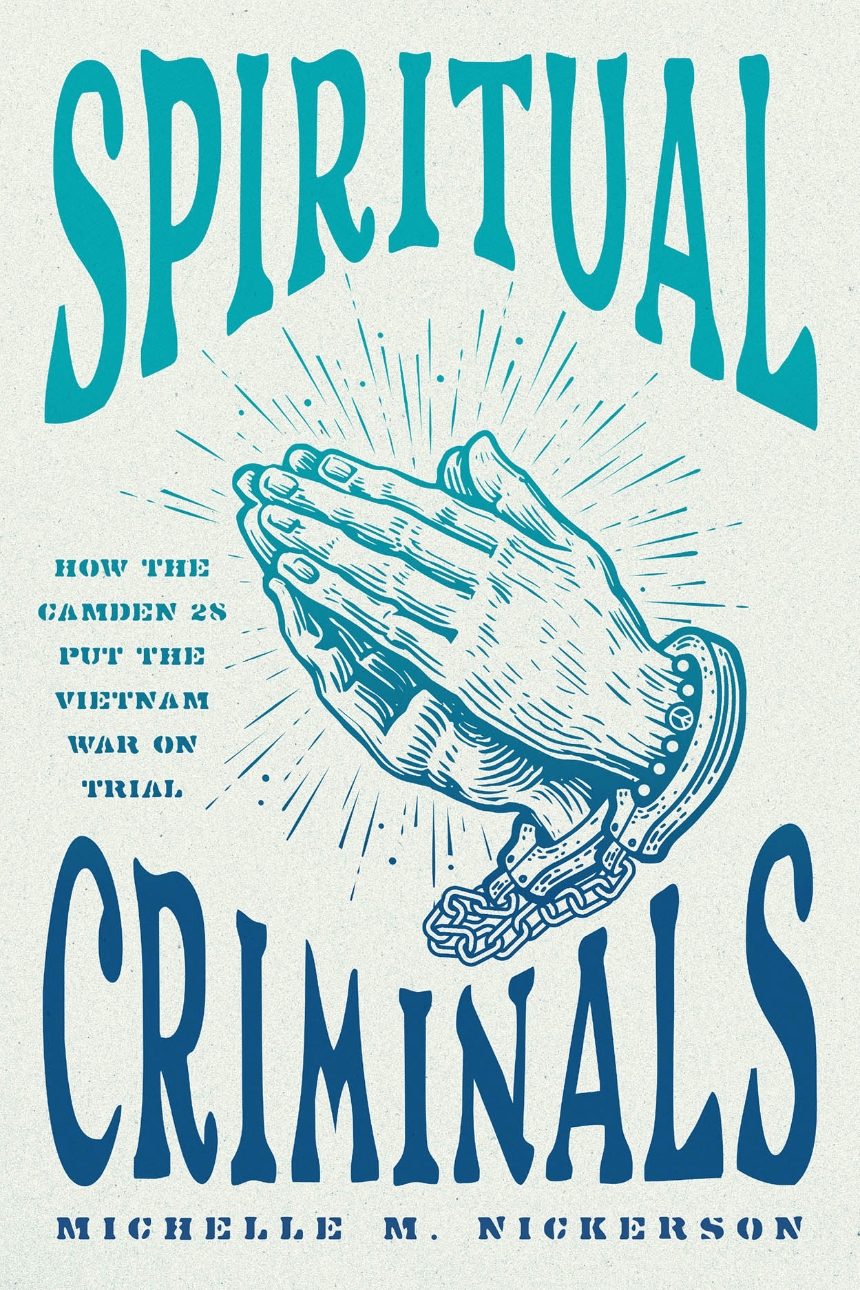
Michelle M. Nickerson. Spiritual Criminals: How the Camden 28 Put the Vietnam War on Trial. 2024
The University of Chicago Press
When the FBI arrested twenty-eight people in connection to a break-in at a Camden, New Jersey, draft board in 1971, the Bureau celebrated. The case should have been an easy victory for the department—the perpetrators had been caught red-handed attempting to destroy conscription documents for draftees into the Vietnam War. But the results of the trial surprised everyone, and in the process shook the foundations of American law, politics, and religion.
In Spiritual Criminals, Michelle M. Nickerson shares a complex portrait of the Camden 28, a passionate group of grassroots religious progressives who resisted both their church and their government as they crusaded against the Vietnam War. Founded by priests, nuns, and devout lay Catholics, members of this coalition accepted the risks of felony convictions as the cost of challenging the nation’s military-industrial complex and exposing the illegal counterintelligence operations of the FBI. By peeling away the layers of political history, theological traditions, and the Camden 28’s personal stories, Nickerson reveals an often-unseen spiritual side of the anti-war movement. At the same time, she probes the fractures within the group, detailing important conflicts over ideology, race, sex, and gender that resonate in the church and on the political Left today.
Finally, for staying up-to-date on the latest titles in all fields, we recommend regularly perusing New Books Network and its "New Books in Christian Studies” page. These pages are updated regularly.

